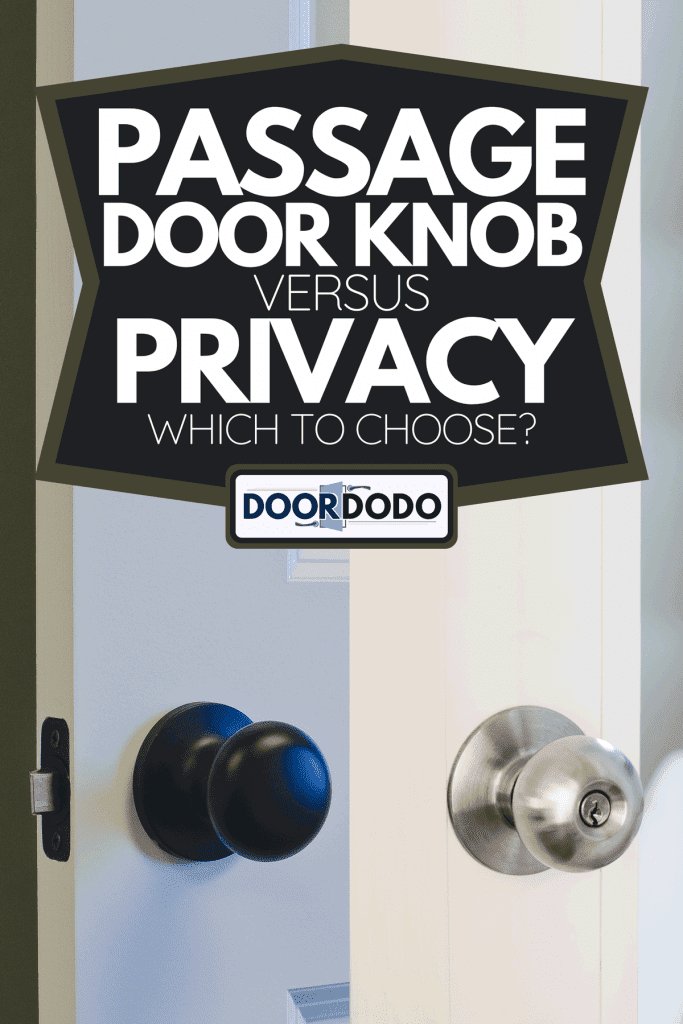
A passage door knob is designed to work without a lock, typically found in halls or between rooms. It’s all about function—easy entry and flow from one area to another. But like many household items, door knobs can wear out or become damaged over time. When they start spinning freely, it’s usually a sign of a problem that needs attention. Let me explain what causes this and how you can fix it.
Understanding the Basics of a Door Knob
A door knob is more than just a handle; it’s a mechanical system that allows access and privacy. Most knobs work with a simple mechanism: when you turn the knob, it engages a latch that holds the door closed. In passage knobs, there’s usually no locking mechanism. But just like a bicycle chain can get loose, door knobs can experience wear and tear that affects their functionality.
Key Components of a Door Knob:
- Knob: The part you turn, typically made of metal or plastic.
- Rose: The plate that mounts on the door, providing a finished look.
- Latch Bolt: The metal piece that keeps the door closed.
- Spindle: A rod that connects the two knobs, allowing them to turn together.
When these parts start to misalign or break, problems arise. Now you might be wondering, what exactly causes the spinning?
Common Reasons for a Spinning Door Knob
There are a few typical culprits behind a spinning door knob. Knowing these can help you troubleshoot the issue effectively. Here’s a deeper look at the most common reasons:
1. Loose or Missing Screws
Sometimes, it’s as simple as a loose screw. Over time, the screws that hold the knob in place can loosen from regular use. If the screws are missing entirely, that would also cause the knob to spin without engaging the latch.
How to Check:
– Look for screws on the knob or its base.
– Tighten them with a screwdriver if they’re loose.
– If screws are missing, a quick trip to the hardware store can help you find replacements.
2. Worn Out Spindle
Another common issue is a worn spindle. This is the rod that connects the two knobs. If it becomes stripped or damaged, it won’t turn properly, causing that annoying spinning sensation.
Signs of a Worn Spindle:
– You can easily pull the knob away from the door.
– There’s a gap between the knob and the door.
Replacing the spindle typically requires disassembling the knob, which might sound daunting but is manageable with some patience.
3. Broken Latch Mechanism
Sometimes, the problem isn’t with the knob itself but with the latch. If the latch mechanism is broken, it won’t engage the door frame properly, making it feel like the knob spins freely.
Checking the Latch:
– Remove the knob to inspect the latch.
– Look for any visible damage or misalignment.
If the latch is broken, you’ll likely need to replace it.
4. Misalignment
Doors can settle over time, and this often leads to misalignment of the latch with the strike plate on the door frame. When they don’t align properly, the latch may not catch, causing the knob to feel loose.
How to Fix Misalignment:
– Check if there are any visible gaps when the door is closed.
– Adjust the strike plate if necessary by repositioning it slightly.
How to Fix a Spinning Door Knob
So, how do you tackle a spinning door knob? Let’s break it down into a few easy steps. This DIY fix doesn’t require advanced tools or skills.
Step 1: Gather Your Tools
Before starting, gather a few basic tools:
– Screwdriver (typically Phillips or flathead)
– Replacement screws or latch (if needed)
– Pliers (optional)
Step 2: Remove the Knob
To access the internal components, you’ll need to remove the knob:
1. Locate the screws on the knob or its base.
2. Use the screwdriver to unscrew them.
3. Gently pull the two knobs apart.
Step 3: Inspect Components
With the knob removed, check the spindle, screws, and latch. Look for:
– Loose screws and tighten them.
– Any signs of wear or damage on the spindle.
– If the latch is functioning correctly.
Step 4: Make Repairs or Replace Parts
Depending on what you find:
– Replace the spindle or latch if damaged.
– Tighten or replace screws if they are loose or missing.
Step 5: Reassemble the Knob
After making your fixes:
1. Position the knobs back together.
2. Screw them in securely.
3. Test the knob to ensure it turns smoothly and engages the latch.
When to Call a Professional
Sometimes, despite your best efforts, the knob still spins freely. If you’ve gone through the troubleshooting and DIY fixes without success, it might be time to call in a pro.
Signs You Need Help:
– You feel uncomfortable with disassembly or repairs.
– The door knob feels defective even after repairs.
– There are underlying issues like door frame problems.
A professional can diagnose the issue more thoroughly, ensuring you don’t end up with a more significant problem down the line.
Preventive Measures for Future Issues
Prevention is key to keeping your door knobs functional. Regular maintenance can prolong their lifespan. Here are some tips to consider:
- Tighten Screws: Regularly check and tighten the screws to prevent loosening.
- Avoid Force: Don’t yank or force the knob when it doesn’t turn.
- Inspect Often: Periodically inspect for signs of wear.
By staying proactive, you can help avoid the frustration of a spinning door knob in the future.
A spinning passage door knob can be more than just an annoyance; it’s a sign that something needs fixing. Whether it’s a loose screw, a worn spindle, or a misaligned latch, many common issues can be addressed with a bit of DIY effort. Remember, if you encounter something too complex, there’s no shame in reaching out to a professional.
With a little bit of knowledge and some handy tools, you can keep your door knobs working smoothly. Next time you encounter that pesky spinning knob, you’ll know exactly what to do!
